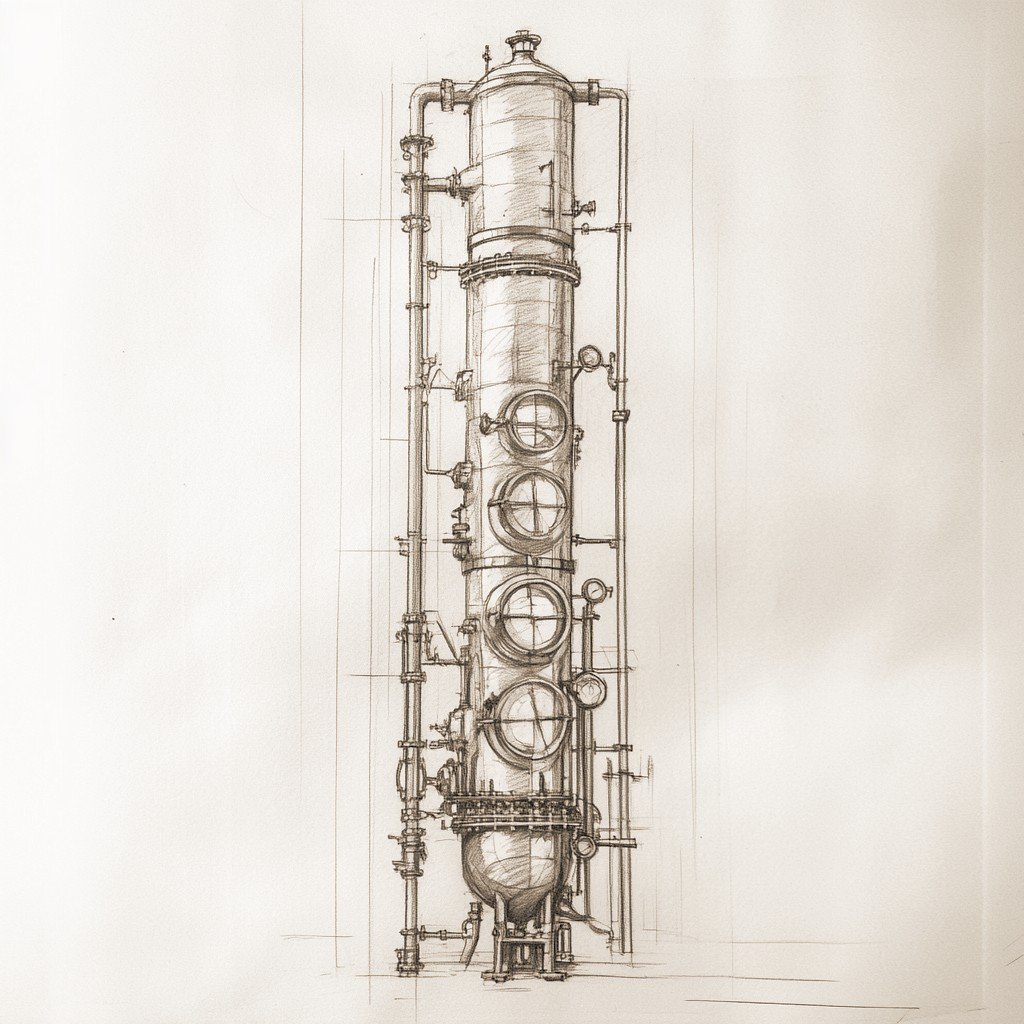What Is Vodka?
Vodka is arguably the oldest spirit category that is still produced today. Many spirits around the world could fall under the label, “vodka,” but similar to the word whiskey, vodka’s history and position in modern culture helps to narrow down our definition.
At its core, vodka is considered a neutral spirit. In the past, this meant it had “no distinctive character, aroma, taste, or color.” However, in 2020 this requirement was taken off the United States Standards of Identity. While vodka may still lack flavor in most cases, it’s not explicitly required to be flavorless (since technically ethanol has a flavor, and no one wants to remove that). Today, “neutral spirit” means a spirit distilled to an ABV of around 95% (USA) or 96% (EU), which involves so many distillations that it rectifies the liquid almost entirely, leaving only subtle aromas from the base materials. Actually, a great deal of the flavor comes from water used to dilute the vodka to a comfortable alcohol level before bottling.
Like I said before, vodka is probably the oldest spirit still made today. At least for recreation, since originally, alcohol distillation was invented by Islamic Scholars in the 6th century for medicine. They spread the method to people living in eastern Europe, and from there, we have evidence that aqua vitae resembling vodka had become a common product. We don’t know for sure if the name “vodka” comes from the Polish word, wódka, or if it is derived from the Russian term for “little water.” But we do know that it is slavic in origin, and that it was being produced at least by the 8th century.
Potatoes played a pivotal role in the evolution of vodka. During the late-medieval period, the primary base for vodka was grain, since it was what most farmers grew. But the introduction of potatoes from Peru brought a significant shift in the process. The crude distilling process used for vodka made it taste (what we would consider) unpalatable. Potatoes, with their higher starch content and creamier texture, made for a much better drink. Even today, potato vodka is often highly esteemed, and especially the vodka made from Polish Stobrawa potatoes.
Innovation didn’t stop there. The invention of the column still by J.B. Cellier‐Blumenthal and Aeneas Coffey brought efficiency to the global spirits market. Column distillation, a method that allows for a higher proof and purer spirit by having one, continuous still with multiple plates, made it easier and faster to distill alcohol to desired levels. This method became the standard in vodka production, allowing distillers to create a cleaner, more refined spirit that could be enjoyed without the harshness or toxicity that was typical of older production models.


While vodka has its roots in Eastern Europe, today’s global spirit landscape reveals many drinks that are quite similar to vodka, though they might not technically fall under its definition or share its history. Spirits like baijiu (China), shochu (Japan), and soju (Korea) share many similarities with vodka in terms of how they’re made and their flavor profiles. Although they differ in ingredients, production techniques, or regional traditions, the essence of these spirits aligns with the qualities that define vodka: a neutral, smooth spirit for mixing or sipping.
(Tip: Some of these are lower in ABV than standard vodka, so if you’re looking for low-alcohol drinks, consider substituting a shochu or a soju for vodka in drinks like the Espresso Martini or Cosmopolitan!)
In the craft cocktail community, vodka often gets a bad rap because it doesn’t add much flavor to drinks. But vodka can be appreciated just as much as whiskey or other aged spirits. In fact, some of the finest vodkas are enjoyed the same way as whiskey: sipped slowly, savored for their subtle nuances, and served at the right temperature to enhance their flavors. Great vodka should possess smoothness, purity, and a clean finish that leaves no harsh aftertaste. When enjoyed properly, it can be a satisfying experience, far beyond just a mixer in cocktails.
Vodka’s journey from a rustic, characterful spirit to the modern-day neutral option that we are familiar with has been shaped by lots of innovation, geography, philosophy and culture. Today, it is the most sold category of spirits in the United States, and vodka-like spirits such as baijiu and soju dominate sales around the world. It’s popular for a reason.
If you’re interested in learning about the history of other drinks like whiskey or brandy, consider checking out my other posts on the Spirits Compendium. My purpose for writing them is to give you free insight into the world of booze. So, I’ve made information available to you that I had to spend quite a lot of resources and time acquiring.
On behalf of Distillare, I hope it benefits you as a consumer of little water.
Art generated by AI




